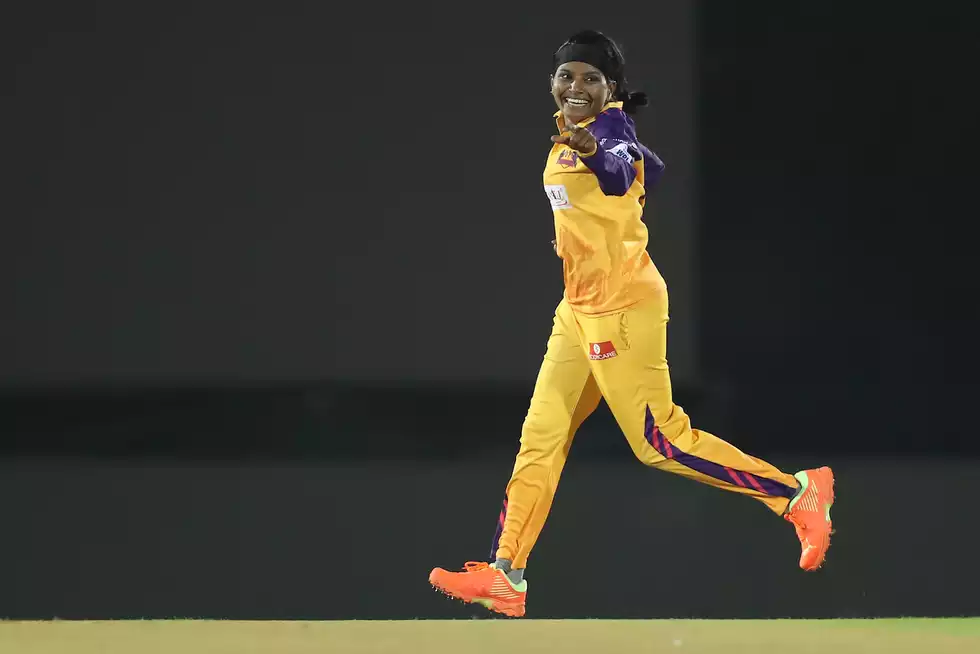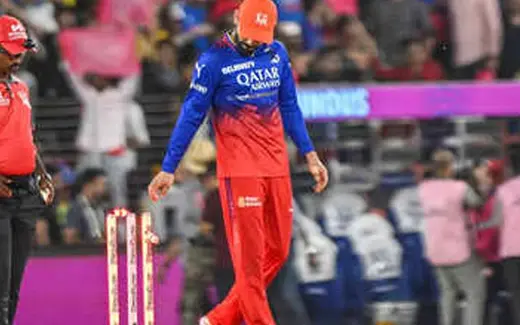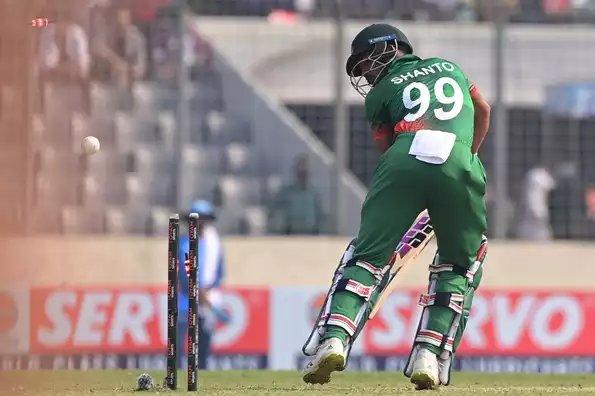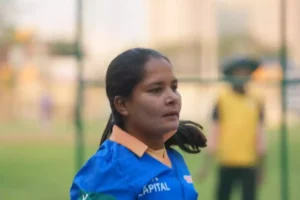Rajeshwari Gayakwad is having a good time while perched on a bean bag in the UP Warriorz gathering area.
“I’ve played 10 years of international cricket, you haven’t treated me,” she nudges a UP Warriorz support staff member who is absorbed in his phone. “Tu mala party nahi dili, daha varsh zale aahe maza.”
When she doesn’t hear back, she presses him further. “You’re not even happy for me.”
He gives her what she wants, a bland expression saying, “I’m happy for you.”
“You’re not even aware of it,” she says in a gloomy tone.
The 32-year-old left-arm spinner Gayakwad is causing him trouble and is demanding attention since she feels particularly comfortable with the UP Warriorz squad.
“I’ve never felt like that in the Indian team,” she says. There, I feel and look extremely different. I’m not as honest with people anymore. I keep to myself and don’t socialise with many people. You simply have so much pressure to succeed when you are a national representative.
However, after coming to UP Warriorz, my behaviour has been more consistent with my behaviour at home. Thinking about it makes it seem strange. I’m always the only one chirping about at home, so I’m never silent. I go bother someone even if they are silent. I’m bothering everyone, even here.”
This conversation about home serves as a reminder of her family life and how much has changed in only ten years. She still feels like a slow learner when it comes to cricket. She feels like the same period of time has flown by. Even when asked to share a glimpse inside her ten years of cricket, she talks of the “chadhav” and “utaar” (ups and downs), but her remarks are replete with references to how drastically her family’s life has changed.
“From having to think twice before spending money on food, to taking care of my family and taking them on vacations, my life has come a long way in these 10 years,” she boasts.
Raised in Bijapur, North Karnataka, Rajeshwari was initially introduced to cricket at the age of 18, when the town’s first cricket academy opened its doors in 2007. It was a novel experience for us. We all agreed to give it a try since we were so intrigued by it.”
However, her father, a primary school teacher, would find it difficult to support a family of five while playing cricket, which was an expensive sport. It’s commonly believed that cricket is a sport for the wealthy. We couldn’t even afford to purchase the cricket gear and bag. Even a Kashmir willow bat cost around Rs. 700–800, which we couldn’t afford at the time, remembers Gayakwad.
We didn’t think our middle-class family could afford to play cricket, but we didn’t feel like we should give up on the game either. My sister Rameshwari and I were really intrigued, because who doesn’t encounter challenges in life?
With a few packed kadak rotis (jowar-based flatbreads), along with some masala chutney, oil, and tomatoes, the two sisters had enough food to last them for days in the camps in Bengaluru.
“We had faith in our diligence. People that have their family’s support don’t require anything else. We never questioned our decision to play cricket. We would board a sleeper bus to Bangalore for the selection trials, with tickets costing Rs 380 apiece. For us, that would be extremely costly.
“Occasionally, there were people in the neighbourhood who would lend us money, or our father would borrow Rs 400–500 each day, which we would then bring back to our home and give to him.” However, despite those trying times, we were content.”
Gayakwad, one of the many talented spinners that have surfaced in the past ten years, has been instrumental in India’s ascent to prominence in international cricket, while frequently being overshadowed by her talented teammates. She hasn’t always been happy with the treatment she’s received, especially when there are so many spinners vying for slots in the XI, but today isn’t the day to focus too much on the bad things in life.
Her left-arm spin remains a formidable weapon against the finest in the world for the time being. If she had continued with her original passion, pace bowling, it never would have happened. “I had started out as a left-arm pacer, but my bowling lacked strength and pace. Even little children started hitting me after a while. Running was the only kind of strength and fitness exercise available in our hamlet.
“My coach once advised switching to spin bowling. At the time, I was really let down. Zaheer Khan used to be my favourite athlete, and I used to leap like him. His assessment affected me because I wanted to be like him. Still, I was at a loss for what to do. We grew up in a setting where we had to respect our coaches and instructors since my father was a teacher.
“He advised me to pay attention to what Sir is saying if he is speaking. You will never be misled by a guru. I followed his counsel, although at first I had trouble. Spin bowling is not as simple as it looks. My back and shoulder would frequently hurt, leaving me to question what I was doing.”
She is happy that the transition occurred today. She is sixth among Indian women who have taken the most wickets, with 99 in ODIs and 61 in T20Is. She is one of the most seasoned players in UP Warriorz, offering her comrades in Generation Z a wealth of expertise, but she is wary.
She chuckles, “This generation has changed.” Her view is grounded in reality and not too optimistic. “As children, we used to listen mutely to anything our elders taught us. However, today’s youth would simply ask, “Yeh kaun hai batane waali (who is she to tell us)?” I’m aware of it. I’m wary as a result. I only share with people who are receptive to guidance.
We needed to be told everything because we were so sheltered. We also had a different perspective when we played cricket. It was all about performing and playing our way to the next level for us. The younger generation prepares themselves knowing what their ultimate aim is. The mentality is also altered by that shift in procedure.”
She doesn’t care to think too much about what the future has in store for her, content to accept whatever comes her way, just like she played her cricket. Right now, winning a competition with a squad that makes her feel comfortable is a simple short goal.







